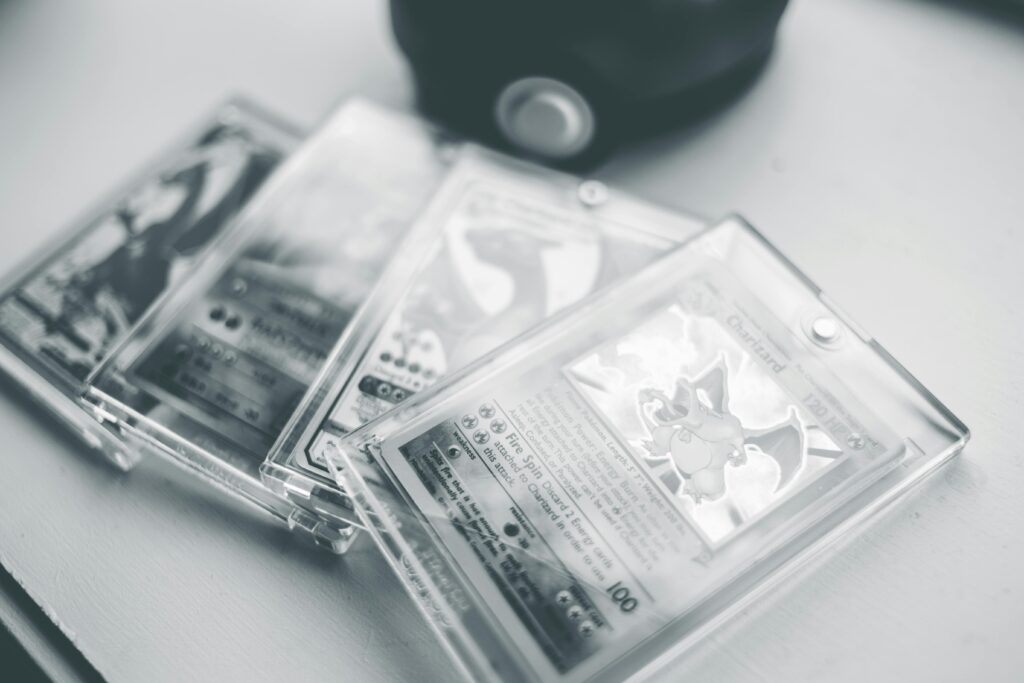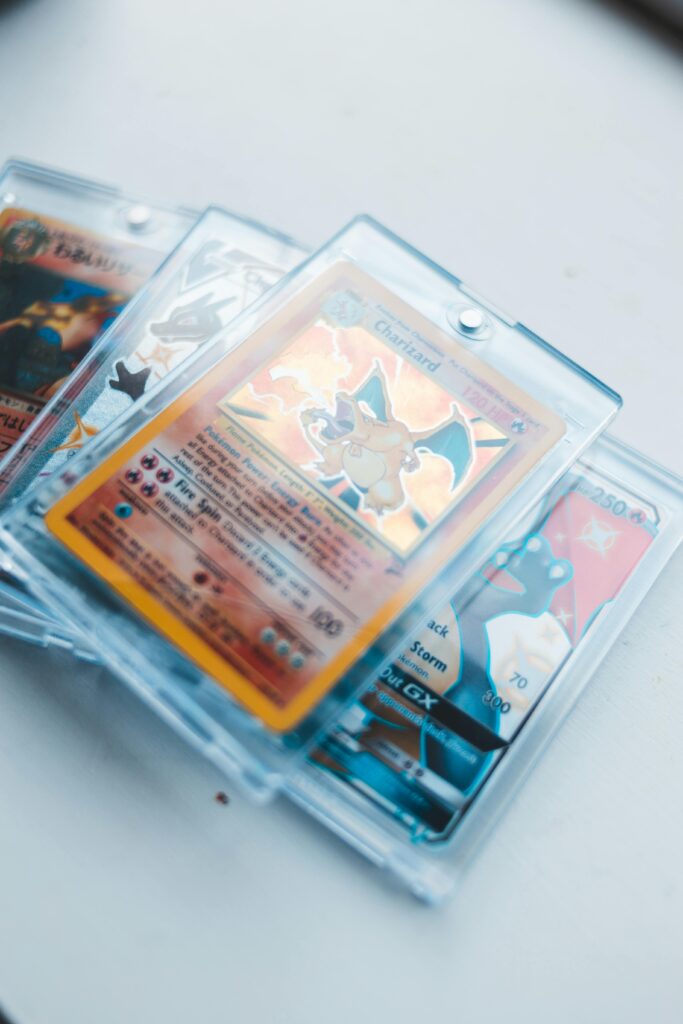The Ultimate Guide to Pokémon Card Care
How to Store, Protect, and Preserve Your Pokémon Cards Like a Pro Whether you’re collecting Pokémon cards for fun, nostalgia, or investment, one thing is universal — taking proper care of your cards matters. Bent corners, scratches, and sun damage can turn a prized pull into a regret. But don’t worry! With the right tools and a little know-how, you can keep your collection safe, organized, and in pristine condition. This guide covers everything you need to know about caring for your Pokémon cards in 2025 — from daily handling tips to long-term storage solutions and proper binder etiquette. 🎴 Why Card Care Matters Pokémon cards are more than just collectibles — they’re memories, art pieces, and sometimes even investments. Here’s why taking care of them is important: 🧤 Step 1: Handling Your Cards with Care Good habits start with how you treat your cards the moment they leave a pack. ✅ Do: 🚫 Don’t: 📦 Step 2: Sleeving Your Cards Sleeving is your first line of defense against scratches, dings, and fingerprints. 🌟 Penny Sleeves (Soft Sleeves) 💡 Tip: Insert the card facing the back of the sleeve to avoid dust and air pockets. 🔒 Step 3: Toploaders and Semi-Rigids For high-value cards or those you plan to grade or sell, you’ll want something sturdier. 📏 Toploaders 🧾 Semi-Rigid Card Holders (for Grading) 💡 Pro Tip: Always sleeve the card before inserting into a toploader or semi-rigid to prevent scratches. 📚 Step 4: Binder Storage — Binder Etiquette 101 Binders are a collector’s best friend — but not all binders are created equal! 🔘 Use a Side-Loading Binder with Acid-Free Pages 🧠 Best Practices: ❌ Avoid: 🧊 Step 5: Short-Term vs Long-Term Storage How you store cards today affects their condition years down the line. 📦 Short-Term Storage Tips: 🧊 Long-Term Storage Essentials: 💡 Humidity control is key. Store at 35–55% humidity and under 75°F (24°C). ☀️ Bonus: Environmental Hazards to Avoid 🚫 Direct Sunlight: Fades colors and hollows over time — store away from windows! 🚫 Humidity & Water: Causes cards to warp, peel, or mold — avoid basements, garages, and bathrooms. 🚫 Pets & Kids: Cute but dangerous! Keep rare cards out of reach. 🧼 Cleaning & Maintenance Tips 🔒 Bonus Tip: Insure Your High-Value Cards If your collection is worth hundreds or thousands of dollars, look into collector’s insurance or homeowner’s policy add-ons. It adds peace of mind against theft or disasters. ❤️ Final Thoughts: Protect What You Love Whether you’re collecting Pikachus for the artwork, building a master set of your favorite era, or stashing a first-edition Charizard for the long haul, proper Pokémon card care helps you enjoy and preserve your collection for years to come. You don’t need fancy gear to get started — just the right mindset, a few good habits, and a little knowledge. Respect your cards, and they’ll return the favor in beauty, value, and joy. ✅ Quick Pokémon Card Care Checklist: Did this guide help you protect your collection?Bookmark it, share it, or follow us for more Pokémon collecting tips every week!
The Ultimate Guide to Pokémon Card Care Read More »

